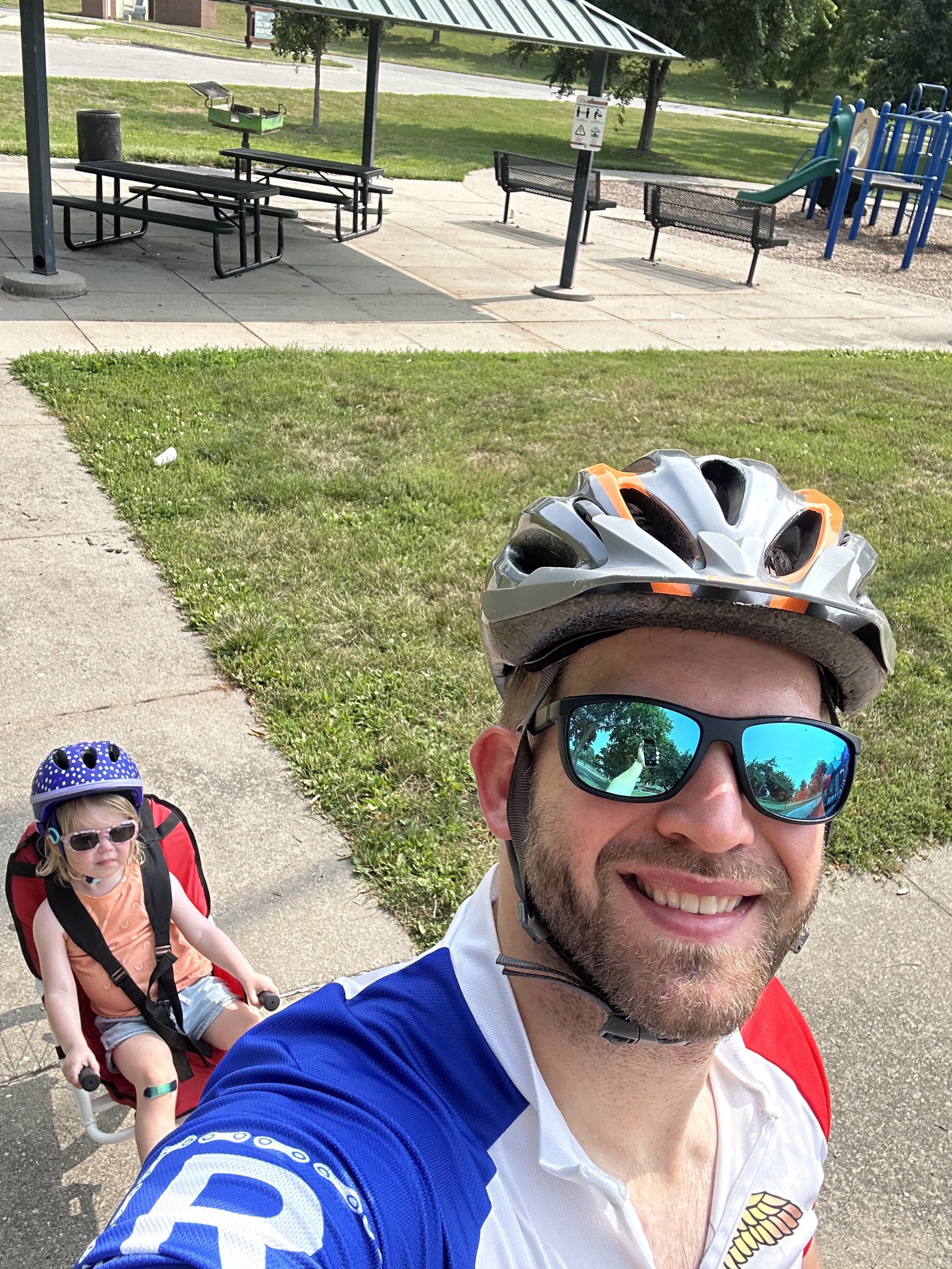Tips to help protect yourself when being active in the Sun.
Exercise is an essential part of a healthy lifestyle, contributing to improved overall health, physical fitness and mental well-being. However, amidst the thrill of outdoor activities, we often overlook the potential harm of excessive sun exposure. Unprotected exposure to the sun's harmful ultraviolet (UV) rays can lead to serious skin damage, ranging from sunburns to long-term issues like premature aging and skin cancer. It’s important to know your risk when venturing outdoors!
Had to help my daughter lather up to protect her skin from during our bike rides.
Understanding the Sun's Ultraviolet Rays
The sun emits some harmful ultraviolet rays: these can contribute to early aging of the skin and to sunburns and skin cancer.
Importance of Sun Protection During Exercise
Preventing Sunburn: Sunburn can be painful and debilitating, making it difficult to continue with your exercise routine. It's essential to protect your skin from the suns rays to avoid sunburns, as they can cause immediate damage to the outer layer of your skin.
Reducing Skin Cancer Risk: Prolonged exposure to the sun without protection increases the risk of skin cancer, including melanoma. Wearing protective clothing and sunscreen can significantly reduce this risk.
Minimizing Premature Aging: These signs include wrinkles, fine lines, and age spots. By protecting your skin during exercise, you can maintain a youthful appearance and overall skin health. Getting in the best shape of your life in the summer but looking 20 years older could be a bummer.
I’ll usually got with a hat to skin my scalp from during from my thinning hair and offer some shad to my eyes.
Sun Protection Tips for Exercising Outdoors
Use Broad-Spectrum Sunscreen: Prior to heading outside for exercise, apply a broad-spectrum sunscreen with an SPF (Sun Protection Factor) of at least 30. Broad-spectrum sunscreens protect against some the two types a rays from the Sun causing issues, ensuring comprehensive coverage.
Timing Matters: Schedule your outdoor workouts during the early morning or late afternoon when the sun's rays are less intense. Avoid exercising outdoors between 10 a.m. and 4 p.m., as this is when the sun's rays are strongest.
Dress Appropriately: Opt for lightweight, breathable, and moisture-wicking clothing that covers most of your skin. Long-sleeved shirts, long pants, and wide-brimmed hats offer excellent protection. Some activewear even comes with built-in UV protection.
Don't Forget Sunglasses: Protect your eyes from harmful UV rays by wearing sunglasses with UV protection. Wrap-around sunglasses offer additional shielding for the delicate skin around your eyes.
Seek Shade: If possible, exercise in shaded areas such as parks with tree cover or along routes with buildings that block direct sunlight.
Reapply Sunscreen: Reapply sunscreen every two hours or more frequently if you are sweating excessively. Water-resistant sunscreens are ideal for exercise, as they offer better adhesion during perspiration- a drawback being they can sometimes cause you to retain more heat.
Stay Hydrated: Keep yourself well-hydrated during outdoor exercise to prevent heat-related illnesses. Drinking water helps maintain healthy skin and aids in recovery after sun exposure.
Exercise is a crucial aspect of a healthy lifestyle, and by taking appropriate sun protection measures, you can make outdoor workouts safe and enjoyable. Prioritizing sun protection during exercise will not only promote better skin health but also reduce the risk of skin cancer and premature aging, allowing you to maintain a vibrant and active lifestyle for years to come.

